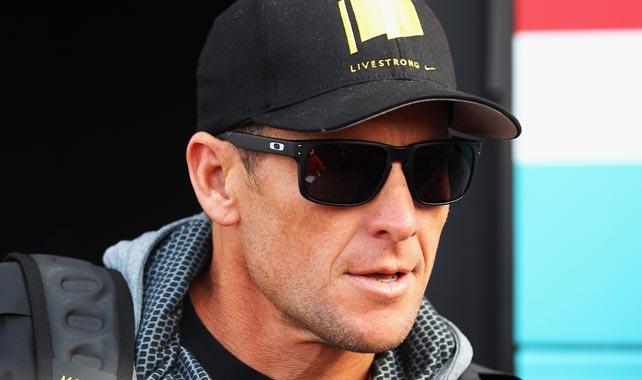
After successfully retiring from road cycling in 2011 with seven Tour De France titles strapped to his helmet, Lance Armstrong has been living the quiet life of a retiree, competing in ironman triathlons and raising millions of dollars to support cancer patients through his charity Livestrong for the past year or so. The two-year long investigation into his involvement in doping was closed in February this year, without charge.
That was until this week anyway, when Lance received a fifteen page letter from USADA, the Anti-Doping Authority, alleging this time that blood samples he had given during 2009 and 2010 were “fully consistent with blood manipulation including EPO and/or blood transfusions.”
Now that’s some pretty serious shit right there – forget the half-arsed attempts at passing drug tests by eating a shitload of poppy seeds or substituting your pee for that of your sober mate’s, it is alleged that in order to pass drug screening, Armstrong utilised a range of masking agents and undertook procedures to allow his blood to carry more oxygen and increase the production of red blood cells. As far-fetched as this sounds, these practices have been used by various sportspeople in the past, from a range of different sports including cycling. That’s right, competitors have actually pumped themselves with other people’s blood without a pressing medical reason, all in the name of winning.
Lance is pretty pissed about the whole situation, with the potential for his seven consecutive titles to be stripped and a ban to be implemented prohibiting him from participating in competitive sport. He is blaming these fresh charges on a vendetta held against him by the USADA. He says they’re spiteful and baseless attempts at immunity by other riders within the cycling scene, something he is all too familiar with experiencing in the past. Having never tested positive to any drug tests throughout his lengthy career, Armstrong has been publicly accused by former biker-buds Floyd Landis and Tyler Hamilton (both admitted drug cheats) of engaging doping.
The ramifications don’t stop there for Armstrong, extending to his personal and professional life ontop of his sporting successes. Since diagnosis with testicular cancer in 1996, at which time he was given a less than 40% chance at survival, Lance Armstrong has become a universal role model for the fight against cancer. Not only did he manage to beat these survival odds, he returned to competitive sport to win seven consecutive titles in one of the most grueling races in the world. The yellow Livestrong wristbands sported on the wrists of millions of people worldwide as part of Armstrong’s charity stand for the integrity and hard work of a persistent sportsperson, not the fake success of a drug cheat.
Armstrong’s lawyer Robert D. Luskin revealed that Lance was given a week to meet with the anti-doping agency officials and give his version of the story in relation to the charges. He declined, insisting USADA would not listen to anything short of a confession.
Words By Nikki Brogan
Main image by Bryn Lennon, Getty Images
Via yahoo.news and Washington Post.



